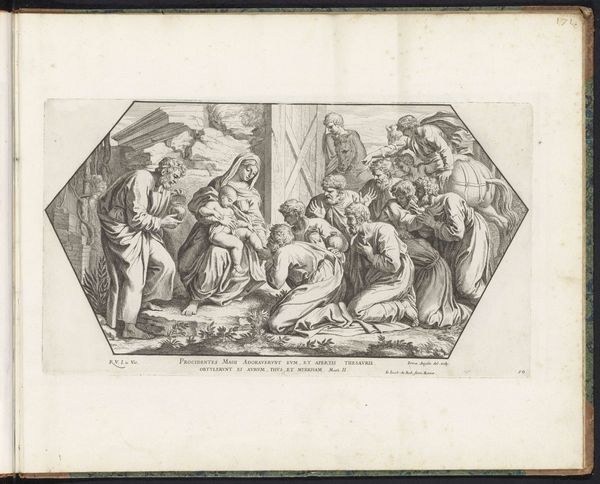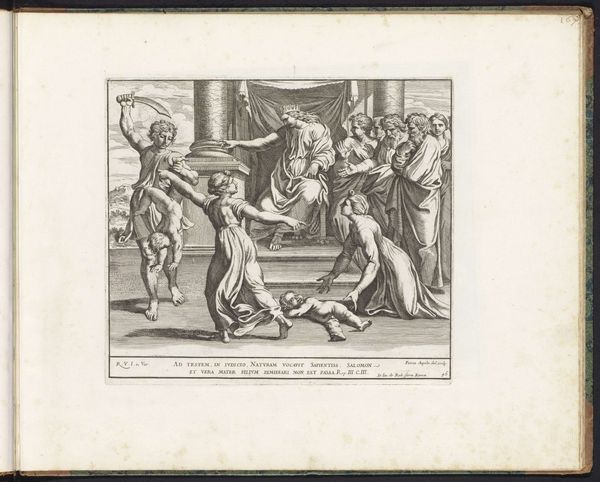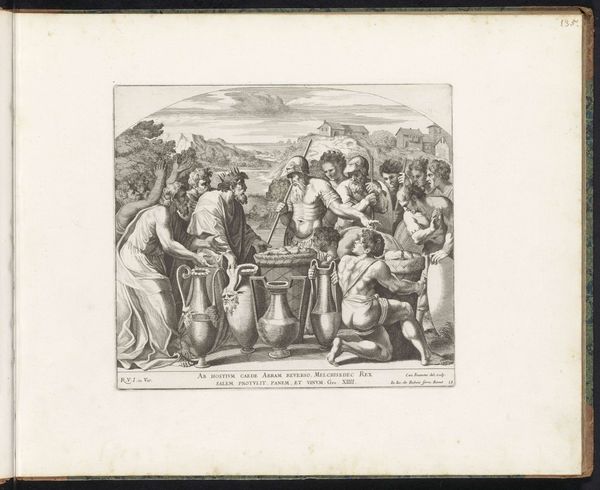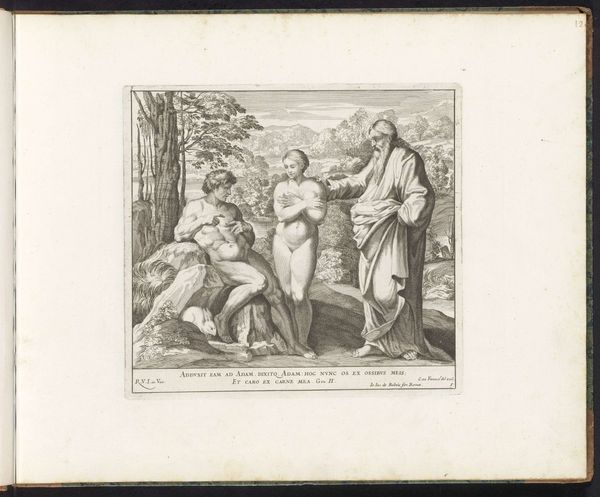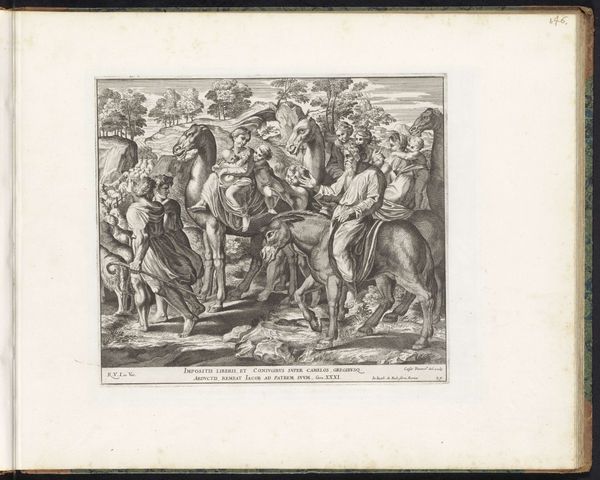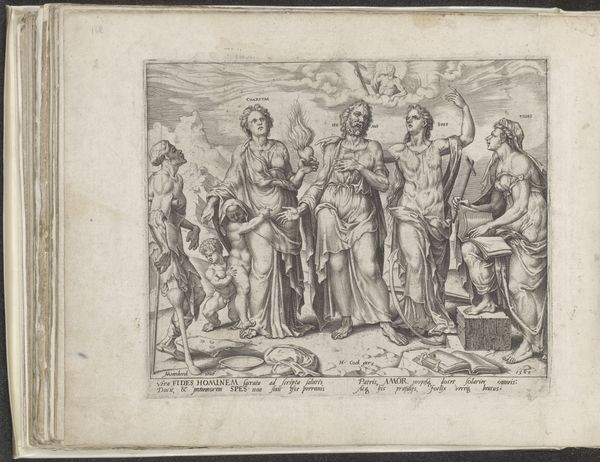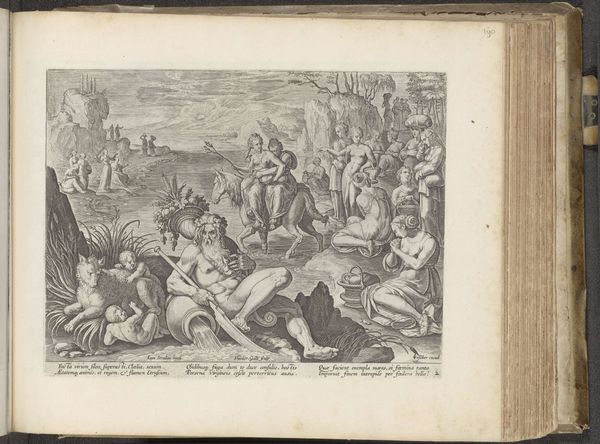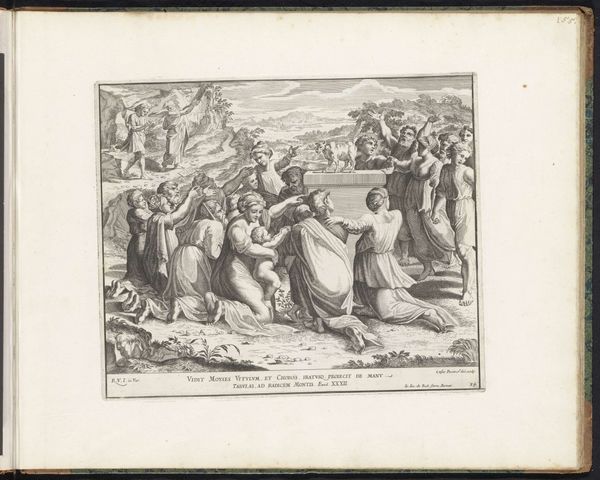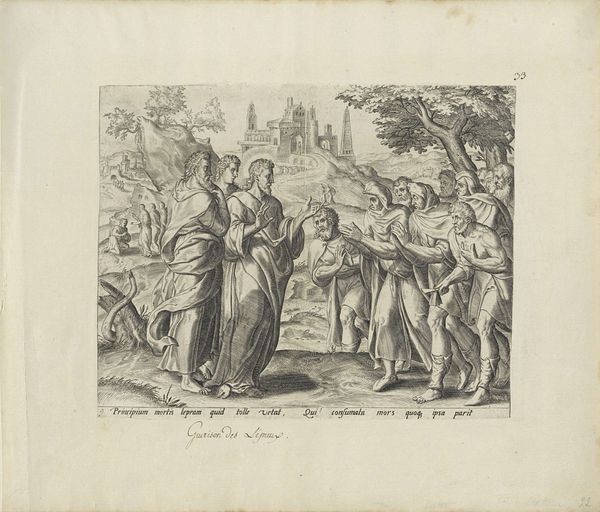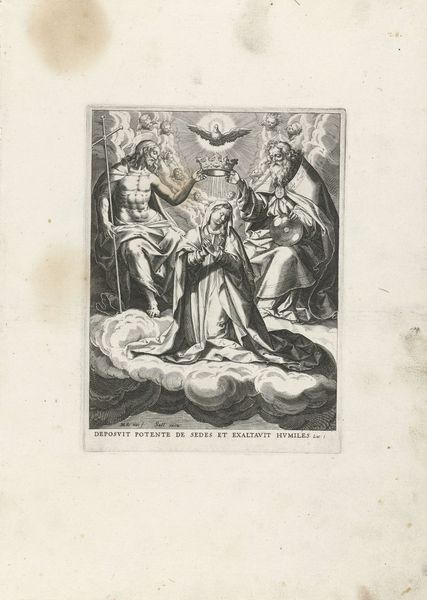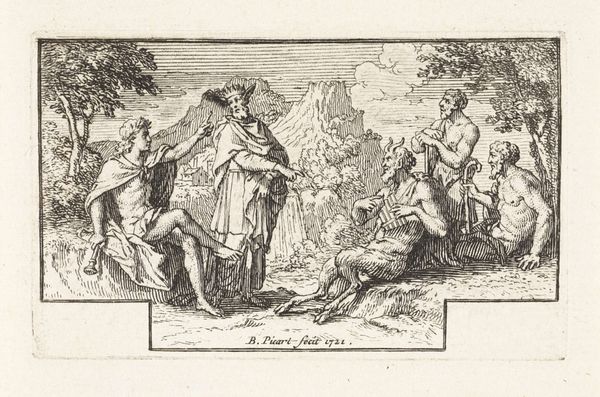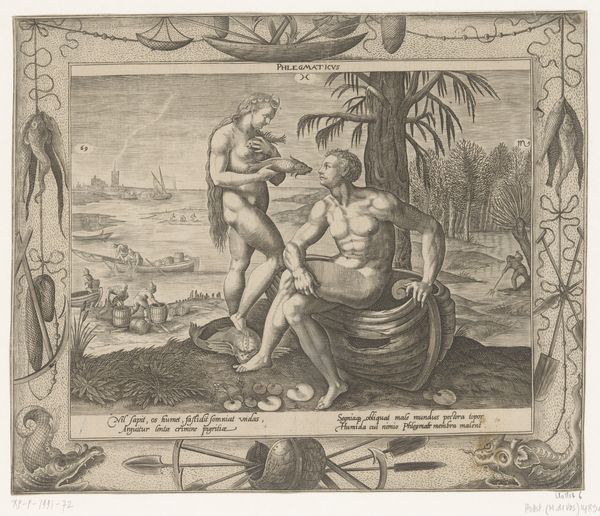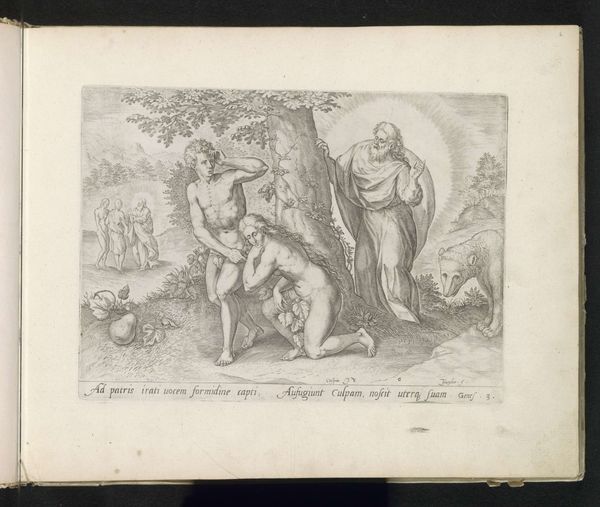
print, engraving
#
baroque
# print
#
figuration
#
line
#
history-painting
#
engraving
Dimensions: height 223 mm, width 394 mm
Copyright: Rijks Museum: Open Domain
Curator: This is "Doop van Christus", or "Baptism of Christ," an engraving created by Pietro Aquila around 1675. Editor: It’s somber, despite the seemingly triumphant figures emerging from the clouds. The fine lines of the engraving give it a sense of meticulous weight. Curator: Aquila’s skill is apparent when you consider the technical demands of engraving. The piece is rendered entirely through linear marks. The engraver had to use a tool called a burin to incise those lines into a copper plate to achieve such intricate detail. Consider, also, how the number of prints made from that plate affected the distribution and reception of this very specific scene of salvation. Editor: This scene is historically significant and raises interesting questions about who is being "saved." Consider that water is presented as a symbol of purification while, globally, many communities lack access to potable water due to extractive economies and discriminatory practices. How do we reconcile this symbol in light of this imbalance? And the near absence of female figures… where are Mary and the other women present at Jesus’ ministry? Curator: Indeed. What is visible versus invisible says everything. The figures waiting to be cleansed represent a sort of production line, their naked bodies becoming subjects of spiritual retooling. Editor: That also links back to the Baroque era when it was made. The drama, the dynamic diagonals, all crafted in the service of power, projecting divine authority through visual spectacle, just like colonialism was being cemented through violent resource extraction across the globe. The printing press, for instance, itself becoming a tool to promote empire and religion… Curator: Which then gets transferred via the printmaker to consumer culture in 17th century Italy. How would someone buying and displaying this piece understand it then? Did its status as a reproducible object impact its perceived value? Editor: Ultimately, art reminds us that no visual representation is neutral. Even those with spiritual goals reflect societal biases. Understanding these works within these broader conversations allows for a critical assessment of our past, present, and future values. Curator: Looking at “Doop van Christus” helps us recognize how artistic processes translate abstract ideals into tangible cultural objects, which both shape and reflect society at any point in time.
Comments
No comments
Be the first to comment and join the conversation on the ultimate creative platform.
